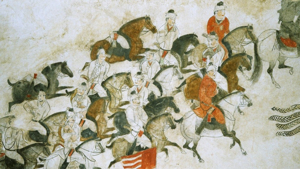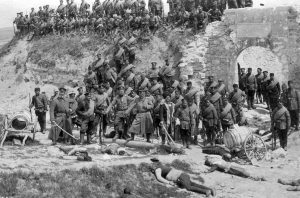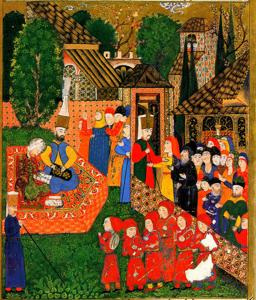
The conversion of Turks to Islam is a significant chapter in the history of the Islamic world, marked by a complex interplay of cultural, political, and social factors. This examination seeks to explore whether the Turks were forced to convert to Islam or if their conversion was primarily voluntary, driven by various incentives and circumstances.
Historical Context: The Rise of Islam and Turkic Peoples
The Turkic peoples, originally from Central Asia, began interacting with Islamic civilizations as early as the 7th century. The spread of Islam into Turkic regions accelerated during the 8th and 9th centuries, particularly following the military campaigns of the Umayyad and Abbasid Caliphates.
As Muslim armies expanded their territories, they encountered various Turkic tribes, leading to a gradual process of conversion.

Reasons for Conversion
- Cultural Affinity: One theory suggests that elements of Turkic spiritual beliefs, particularly Tengriism, shared similarities with Islamic doctrines. This cultural affinity may have facilitated a smoother transition for many Turks as they encountered Islam. The concepts of a single god and a moral code resonated with some aspects of their traditional beliefs.
- Political and Military Incentives: The political landscape during this period played a crucial role in the conversion process. As the Abbasid Caliphate sought to consolidate power, they recruited Turkic warriors into their military ranks. These warriors often converted to Islam, not only for religious reasons but also to gain favor and secure positions within the new political structure. The rise of Turkic dynasties such as the Ghaznavids and Seljuks exemplified how conversion could lead to significant political power.
- Economic Benefits: Converting to Islam often came with economic advantages. Muslims were exempt from certain taxes imposed on non-Muslims (such as the jizya tax), which made conversion financially appealing for many Turkic tribes. Over time, these economic incentives contributed to a broader acceptance of Islam among Turkish communities.
- Social Pressure and Integration: While there were instances where coercion was involved, particularly during military campaigns, most historians agree that conversion was largely voluntary or resulted from social pressures rather than outright force. As Turkic leaders converted to Islam, their followers often followed suit in hopes of maintaining social cohesion and loyalty within their communities.
Conflicting Narratives: Coercion vs. Voluntary Conversion
The narrative surrounding Turkish conversion to Islam is complex and multifaceted. Some historians argue that while there were instances of forced conversions—especially in specific contexts—these were not representative of the overall trend. For example:
- Military Campaigns: During military conquests, some tribes may have faced pressure to convert for survival or political expediency. However, these instances were often localized and did not reflect a systematic policy of forced conversion across all Turkic peoples.
- Gradual Acceptance: Many scholars emphasize that Turkish conversion occurred gradually over centuries rather than through immediate coercion. Historical records indicate that while some Turks adopted Islam early on due to military alliances or economic benefits, widespread conversion did not take place until later periods.

Key Historical Figures and Events
Several key figures played significant roles in the spread of Islam among Turks:
- Sultan Satuq Bughra Khan: Often regarded as one of the first prominent Turkic rulers to convert to Islam, his acceptance of the faith in the 10th century led many nomadic communities in Central Asia to follow suit.
- The Battle of Talas (751 CE): This battle between Muslim forces and the Chinese Tang dynasty marked a turning point in Turkic history. Many Turkic tribes sided with Muslims against the Chinese, leading to increased interactions between Islamic cultures and Turkic peoples.
Conclusion
In conclusion, while there were certainly instances where coercion played a role in the conversion of Turks to Islam—particularly during military campaigns—the overall process was largely characterized by voluntary acceptance driven by cultural affinities, political advantages, and economic incentives.
The gradual nature of this transformation reflects a complex interplay between adopting a new faith and maintaining cultural identity.Understanding this historical context is essential for appreciating contemporary Turkish identity and its relationship with Islam today.
As Turkey continues to navigate its unique position at the crossroads of East and West, the legacy of its historical conversions remains relevant in discussions about national identity and cultural heritage.







